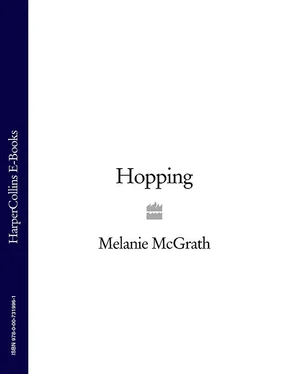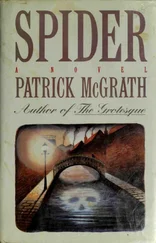The Hidden Lives of an East End
Hop Picking Family
Melanie McGrath
For Tai, who looked forward to this book .
‘Kent, sir – everybody knows Kent – apples, cherries, hops, and women.’
CHARLES DICKENS, The Pickwick Papers
PREFACE Contents Title Page Dedication Epigraph Preface Chapter One Chapter Two Chapter Three Chapter Four Chapter Five Chapter Six Chapter Seven Chapter Eight Chapter Nine Chapter Ten Chapter Eleven Chapter Twelve Chapter Thirteen Chapter Fourteen Chapter Fifteen Chapter Sixteen Chapter Seventeen Chapter Eighteen Epilogue Acknowledgements Also By Melanie Mcgrath Copyright About the Publisher
A few years ago I wrote a memoir of the lives of my grandparents, Jenny Fulcher and Leonard Page. In the telling of my grandparents’ story I wanted to capture the essence of two ordinary lives and to tell the story of the East End of London during an extraordinary period which saw it transform from what Jack London called the ‘abyss’– a hive of poverty and deprivation whose dimmed population toiled in sweatshops, factories and in the docks – to the less impoverished but more socially fragmented place it is today; a place associated not so much with economic deprivation (though there is still far too much of that) as with a hip art scene, vibrant Banglatown, Canary Wharf city slickers and, most recently, with the massive regeneration programme in disguise that is the 2012 Olympics.
Having told that story in Silvertown , the most obvious next step would have been to have continued my family story into the present day. To have done that, though, would have been to ignore completely one of the greatest of the East End’s many great traditions: hopping. Every summer throughout the eighteenth, nineteenth and much of the twentieth centuries, hundreds of thousands of East Enders made the trip to the hop gardens of Kent to pick hops. My own family were among the minority who didn’t regularly go on these trips. My grandmother, Jenny Fulcher, regarded hopping as common and, as concerned as she was with respectability, avoided it. My mother went once or twice, but the hop never became part of her life.
But it was at the centre of the lives of many, if not most, East Enders; so much so, in fact, that the annual hop was referred to, not without irony, as ‘The Londoners’ holiday’. It would hardly count as one today – the hoppers, mostly women and children, worked long hours in sometimes difficult conditions – but the annual hop constituted a break from the smoke and grime of the East End and as such it became the nearest thing to a holiday that most would ever see. Mothers, in particular, looked forward to bringing their children down to the countryside for their health, and for many East End children the annual hop was their only opportunity to run about unhampered by roads and vehicles and noise, to breathe air uncontaminated by factory waste and smoke, to watch the sun go down and look out across wide open spaces to the horizon beyond. The money East End women earned by picking hops was usually the only part of the family income over which they had control, and it was often used to buy children the boots and coats they would need for the coming winter.
The tradition of employing Londoners to pick hops in Kent began in the mid-fifteenth century when Flemish weavers first began cultivating the bines in the Kentish weald, though it’s possible that cultivation itself began long before, since we know that the Romans, who marched into Britain through Kent along what is now the A2 Dover-to-Canterbury road, brought hops with them. The first recorded hop garden in Britain was thriving at Westbere near Canterbury in 1520, and hops were still growing on the same site more than 450 years later.
The hop plant, Humulus lupulus , a relative of cannabis, is a fast-growing herbaceous perennial which dies back to its rhizome in the winter. Although vine-like, it is strictly speaking a bine, the stout stems being covered with little hairs to assist in its clockwise clambering habit. Though hardy, it requires deep, well-draining loamy soil and shelter from the wind, and in the soft undulations of the Kentish downland, Flemish weavers found the perfect growing conditions. At that time, hopped beer was virtually unknown in Britain, but it had long been popular in central and northern continental Europe. All over medieval Europe, beer was a relatively safe substitute for water, which was often contaminated. In Britain, people tended to drink ale, a much heavier, sweeter drink, brewed without hops. Adding hops to beer not only imparts a grassy, bitter flavour and a spicy aroma, but the acids in the hop resin have a mild antibiotic effect which assists the work of the yeast and, along with the alcohol itself, helps preserve the beer for longer. Hopped beer can thus be brewed with a lower alcohol content than ale, which makes it a more practical substitute for water.
There were numerous early attempts to restrict hop production in Britain – Henry VIII forbade his own brewer to use such foreign fripperies and his Catholic daughter, Mary Tudor, condemned the hopping of beer as a nasty Protestant habit. All the same, the popularity of hops grew with the practically minded British, and many growers also became brewers, planting hop gardens for use in their own breweries and building drying oasts, the word taken from Flemish. During the sixteenth and seventeeth centuries, gardens were planted all over southern and central England, but the hops continued to flourish best in Kent, where there was a ready supply of sweet chestnuts with which to make poles to support the bines, the enclosed fields provided shelter, and the hops did not have far to travel to the vast breweries of London. So important did Kent become in hop production that in 1681 the London hop market moved from Little Eastcheap to Borough to be nearer to the main thoroughfare to Kent.
During the fifteenth and sixteenth centuries, troops of indigents, Gypsies and Irish and a few Londoners poured into Kent to pick the hop crop, staying on to pick the apples, pears and plums that also flourished in the ‘garden of England’, but the real inflow of Londoners began after the mid-seventeenth century, when Londoners took to drinking beer rather than the gin they had previously favoured, and Kentish farmers began to plant more hops to meet the demand. At first, only the poorest and the most desperate for work came, either walking the fifty or so miles from the East End of London to the Weald or, for the few who could afford the passage, travelling by boat as far as Gravesend and on foot from there to the gardens in north and east Kent. On the way, these new migrants slept in cart and cow sheds and in pigsties on mattresses of old hopbines, or, if there were none around, under hedges.
By the end of the seventeenth century Britons were consuming 300,000 hundredweight of hops every year, more than half of which were grown in Kent. A hundred and fifty years later 40,000 acres of Kentish loam were being put down to hop gardens, each acre requiring 200 pickers, numbers that could be met only by bringing Londoners down in their thousands.
As luck would have it, the hop boom coincided with the development of the railways. By the 1850s the Southeastern Railways company and the East Kent Company were putting on special hoppers’ trains in the season, using cattle trucks as carriages, and the Joint Transport Committee of Railways and Farmers began printing postcards that farmers could send to London hoppers, allocating them a picking spot and a place on one of the ‘hoppers’ specials’. By 1867, demand was so great that Kentish farmers started using hiring agents actively to recruit hoppers from the poorest districts in London: Poplar, Whitechapel, Limehouse, Bow, Stepney and parts of Hackney to the north of the river and Bermondsey and Southwark in the south.
Читать дальше












